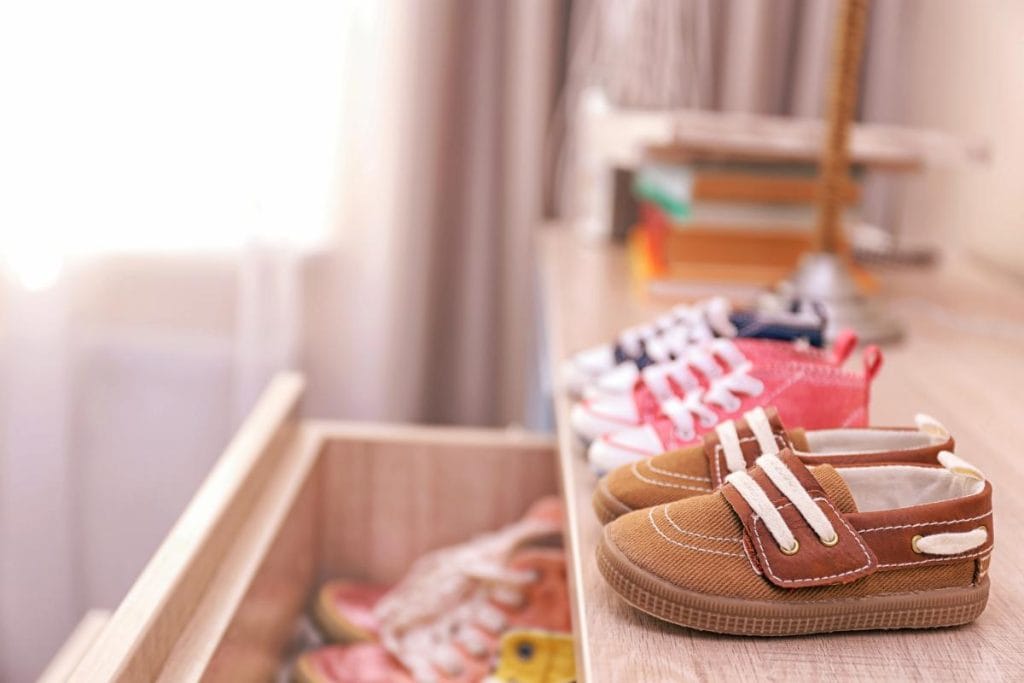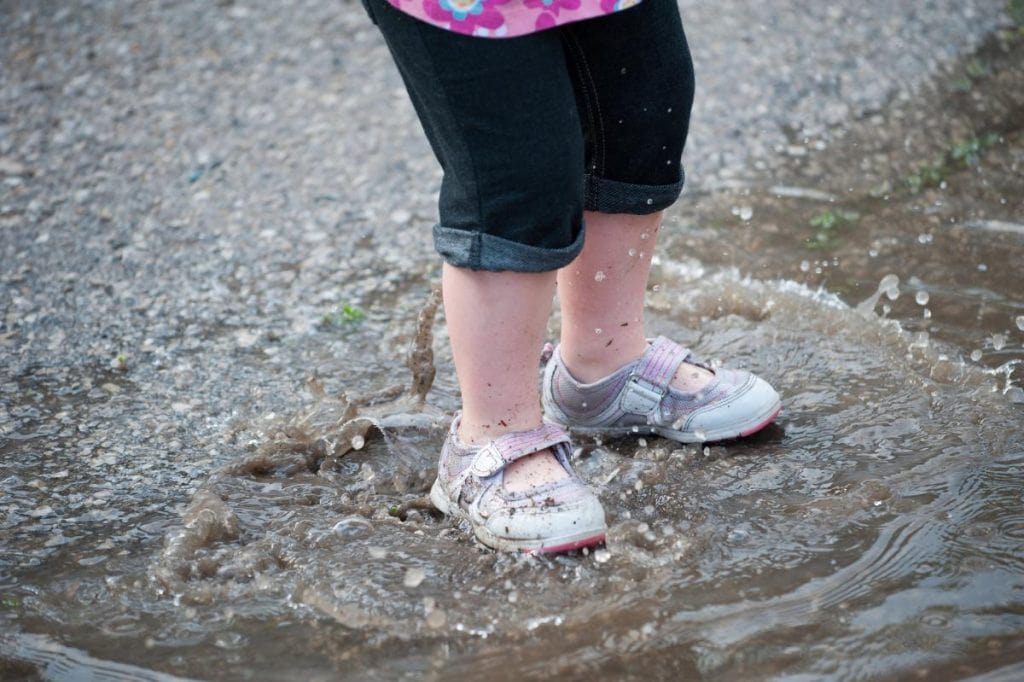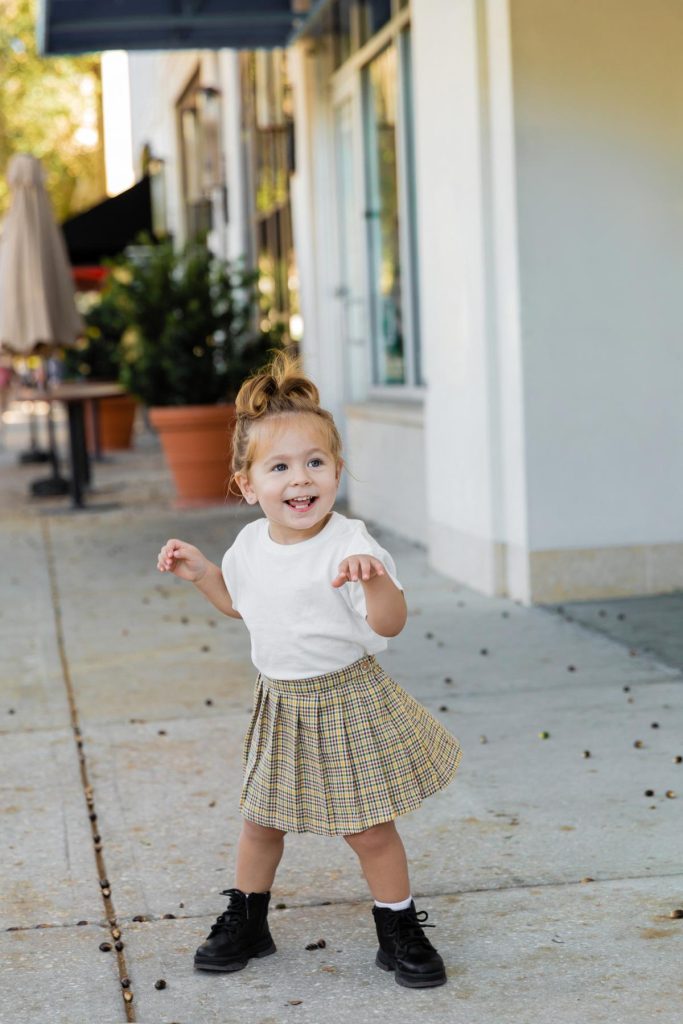Watching your child take their first steps is a magical moment. As parents, we want to support and protect those tiny feet as they begin a lifetime of adventures. But when it comes to choosing the right footwear for our little ones, many of us find ourselves overwhelmed by the options and unsure of what’s best. Should we go for the cutest designs or prioritize comfort? How do we know if a shoe fits properly?

First, a reminder: If your child hasn’t started walking, it’s best to leave their foot bare. Not only does this strengthen their foot muscles as they walk on different surfaces, but it also helps them develop stability and coordination.
However, when your child is older and has started walking, they need the right footwear for those important first steps. It could be comfortable shark slides kids love or a pair of lightweight, non-slip shoes. Either way, if you’ve ever had to shop for your kid, you’d know there is nothing simple or easy about the process.
Grumpy sighs, wiggly feet and a meltdown over the “wrong” color laces are common sights at the kids’ section of stores. But choosing the right footwear for your kid doesn’t have to be so frustrating. Need help? Don’t worry — we’ve got you covered with some tips to make your next shoe-shopping trip a breeze.
1. Measure the Feet
Shopping for footwear for an adult is different from shopping for children because kids’ feet are still growing. A child’s feet can grow up to a half size every few months. This makes size an important factor to consider when choosing footwear for your kid.
The coolest shoes in the world won’t matter if they pinch the toes. So, get those feet measured. Most shoe stores have a handy measuring tool, and a helpful staff member can ensure a snug but comfy fit.
Alternatively, you can draw an outline of your kid’s feet on paper and measure it against the insole of the shoe you pick. You should aim for a thumb’s width between the longest toe and the shoe’s end when deciding on a shoe. It’s also a good idea to measure both feet as they may not be the same size, and choose a pair that best fits the larger foot.
2. Go for a Flexible Sole
Kids are constantly on the move, so their shoes should be able to keep up. Get shoes that have flexible soles, meaning they bend easily. A good sole should bend at the toes. This allows for natural foot movement and makes running and jumping more comfortable.
Also, take a good look at the insole. A cushioned insole provides extra comfort. It absorbs shock and reduces pressure on your child’s feet. Look for shoes with a padded insole, or add an extra insole yourself for additional cushioning.

3. Prioritize a Snug Fit, Not a Tight Fit
A well-fitting shoe is important for your child’s foot health. Not only does it prevent a wobbly and uncomfortable gait, it also reduces the chances of a fall. Ideally, a thumb’s width of space between the longest toe and the front of the shoe is recommended.
While laces might seem like a hassle, for older kids, they offer the best adjustability for a perfect fit. Velcro straps are great for the little ones learning to do things for themselves. Also, the heel of the chosen footwear should fit snugly without slipping out.
4. Look at the Shape
Just like grown-up feet, little feet come in all shapes and sizes. Wide feet need wide shoes and narrow feet need narrow ones. Generally, shoes with pointed toe boxes are not ideal for natural foot movement. They may look stylish, but they can cause foot problems like calluses, bruises, and bunions. Look for shoes that mimic the natural shape of your child’s foot for ultimate comfort.
5. Choose the Right Materials
Kids move around a lot. This constant motion can lead to sweating on their feet. Gathering of sweat in the footwear over time can be unsanitary, increasing the risk of a fungal infection and causing odors.
For that reason, shoes made from breathable materials like leather, canvas, or mesh are recommended. They allow air to circulate, keeping those sweaty little feet cool and comfortable.
Moreso, these materials are generally more durable. Avoid synthetic materials. They can trap moisture, cause discomfort, and often lead to blisters.
6. Keep Style in Mind
Sure, Mom or Dad knows best. But when it comes to footwear, the right one is often the one that your child wants to wear. So, involve your child in the shoe selection process. This way, you can be sure they like the shoes before you spend your hard-earned money. Let them pick colors or styles they love, while you focus on the practical aspects like the shape, size, and material.
Pro Tip:
Shopping for shoes in the afternoon is a good idea. Feet tend to swell slightly throughout the day, ensuring a more accurate fit since they are likely to be everyday shoes.

Putting Your Best Foot Forward
Choosing the right pair of footwear for your kid doesn’t have to be frustrating for either the parents or the kiddos. By following the tips provided here, you gain an upper hand and become a shoe-shopping pro. Remember to clean the shoes regularly and look out for signs of wear and tear. If your kid has not yet outgrown their shoes, you should try to change them every 6-12 months.
